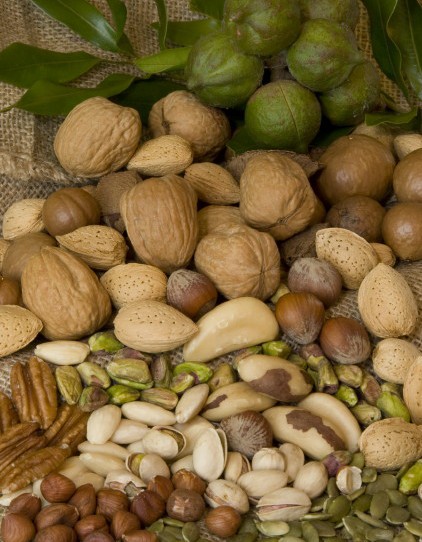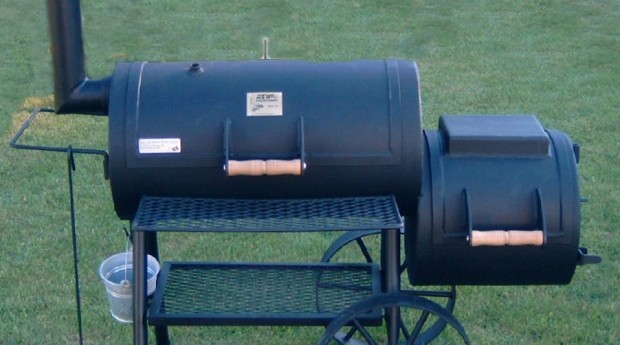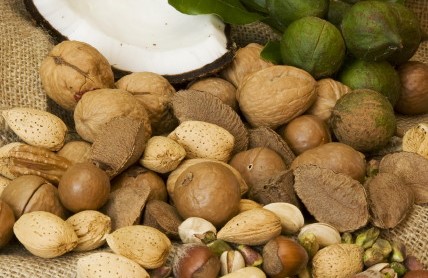Water [Part 2]: Navigating Your Drinking Water
Tap Water
Spring Water
Other Bottled Water
Purified Tap Water
Carbon Filtration
Reverse Osmosis
Distilled Water
Ozonated Water
Ultraviolet Light

Have you ever felt confused by having so many drinking water choices? Walk into any grocery store and you’re likely to find spring water from the far reaches of the earth in addition to local varieties such as distilled, filtered, or mineral water. It makes you wonder why a liquid that is so readily available has to get shipped so far and cost so much.
Because water makes up such a large part of your bodies and is vital for many bodily functions, proper hydration with good quality water is essential for our overall health and well-being. That’s why we think it is beneficial to choose the best water you can find rather than to drink just any water.
Some people are lucky enough to have access to a high-quality local well water, rainwater, coconut water and water from natural springs, lakes, and glaciers. While it would be fantastic to have these sources available to us all, most of us rely on more common varieties such as tap water, home-purified water, or bottled water that may be distilled or from a spring or other sources. Since all waters are not “treated” equally, we hope you will enjoy this closer look at some differences in nature’s favorite thirst quencher.
Tap Water
You will rarely find unpolluted tap water in an environment polluted by industry, agriculture, and garbage dumps. According to the Environmental Working Group(1), over 300 different pollutants were found in U.S. tap water tested by water utilities between 2004 and 2009. It is simply too expensive for water-treatment plants to remove all contaminants. Although these plants do the basic job necessary to make the water safe for consumption by removing or lowering the content of the most dangerous contaminants, often they must add chlorine, toxic itself, to kill the bacteria. That is why we believe it is best to avoid unpurified tap water when you can.
If you would like to find out more about your local drinking water, you can access information at the Environmental Protection Agency Web site.
Spring Water
To many people, the term “spring water” sounds good, but environmentalists warn that rules and regulations about the production and testing process may not be strong enough. The quality of spring waters varies as the springs themselves may be exposed to agricultural or industrial pollutants. As a result, it is important to know the source of your spring water and to research its quality. These days much of the bottled water sold in America comes from far away places like Norway, Fiji and the European Alps, just to name a few.
Some spring water is considered to be “mineral water,” which will contain not less than 250 parts per million total dissolved solids. Naturally occurring minerals and trace elements can include calcium, potassium, magnesium, sodium, selenium, silica, and zinc. FDA regulations prohibit bottling companies from adding supplemental minerals.
Little data is yet available on the bioavailability of minerals in water, which is the body’s ability to absorb the minerals into your tissues. At best, the amounts of minerals present in water may add only a small amount of what the body requires; therefore your main source of minerals should be the food you eat, and not the water you drink.
We recommend that you do some research on your local spring water providers and try to stay informed about the purity of their sources.
Other Bottled Water
Other bottled water, such as “artesian water,” “ground water,” “sparkling bottled water,” “well water,” or “purified water” may also be available to you. It may come as a surprise to some that after a four-year review, the Natural Resource Defense Council(2) estimated in 1999 that 25 percent or more of bottled water was nothing more than purified—or even unpurified—tap water.
Producing companies may use purification systems, such as filtration, reverse osmosis, or distillation, and will typically disinfect water via ozone or ultraviolet light treatment. Through purification methods, the removal of harmful chlorine will make the water taste better. If water has been purified, it will most likely say so on the label, which means you’ll get good drinking water but at a relatively expensive price.
Some of water’s health benefits may be negated by plastic bottles. This is because during storage, especially in warm temperatures or for long periods of time, even the purest water can become contaminated by compounds eluting from plastic. And last, but not least, environmentalists note the amount of waste produced daily by discarded plastic bottles and the amount of fuel consumption and pollution that result from importing foreign bottled water.
Except in the event of an emergency, it might be best to leave this category of bottled water on the shelf. There’s no doubt that water in glass bottles is the better choice for our bodies.
Purified Tap Water
Water purification not only can make your water safer and healthier, it can also improve the taste, odor, and color. Used individually or in combination, the most common methods are carbon filtration, reverse osmosis, distillation, ozonation, and ultraviolet light treatment.
Carbon Filtration
When water is filtered with activated carbon, some pesticides, as well as radon gas, hydrogen sulfide, mercury and chlorine(3), can be removed. Carbon filters, which are commonly used in homes, are either granular-activated (GAC) or solid-block activated (SBAC). GAC filters tend to release filtered compounds back into water once they reach a saturation point in their storage capacity. These accumulated impurities can lead to bacterial contamination of the filter. On the other hand, SBAC filters are considered to be more effective as a result of their very fine structures, although they must be changed frequently to prevent clogging.
Under-the-sink carbon filters usually perform better than countertop, faucet, or pour-through models.
If you decide to use an activated carbon filtration system, consider combining it with other purification methods and be sure to change the filters frequently for best results.
Reverse Osmosis
In chemistry class, you may have learned that when you have two solutions with different concentration levels separated by a semi-permeable membrane, the solvent of the one with the lower concentration will pass through the membrane to dilute the one of higher concentration to equalize the concentration levels on both sides. The force behind this process is called “osmotic pressure.”
One of these naturally occurring membranes, for example, is located in your body—the lining of your intestines. That’s the reason why you can’t drink ocean water in order to stay hydrated if you get lost at sea or stranded on a deserted island. Because of the salt, ocean water is so highly concentrated that drinking it would cause the other water in your body to travel through the lining of your intestines to dilute it, which would then cause dehydration and death.
The process called reverse osmosis (RO) is effective in purifying water because by reversing the naturally occurring osmotic pressure, all kinds of particles, such as arsenic, lead, nitrate, and some pesticides(4), are left behind. Ideally, you want to choose RO units for your home that minimize and recycle wastewater. The RO treatment systems are usually combined with other pre- and post-filters and have membranes that need to be maintained regularly for optimal results.
You can purify water to different degrees depending upon the kind of filter that is used. An overview of the effects of different filters can be found here.
Distilled Water
Water filters used at home or by companies that produce drinking water that is sold in stores do not completely remove all contaminants. The distillation of water makes it even purer by killing viruses and bacteria and removing lead, nitrate, sodium chloride and pesticides. You may notice that distilled water tastes flat or bland because the minerals that give water its taste are removed. You can overcome this small problem by simply using it for cooking or mixing it with something else to make your favorite drink.
The health benefits of distilled water are hotly debated among the experts. For some, it’s the best water you can drink—the purest, most detoxifying, most health-promoting fluid of all. It has the ability to detoxify our body because it has an ultra-low viscosity, which dissolves many soluble toxins and transports them out of our cells, tissues, and lymph channels for elimination.
Other experts do not recommend distilled water. One thing this camp tells us is that it is highly acidic. That is not really true, though. Initially, distilled water is neutral, but when it comes in contact with air, it absorbs CO2, lowering the pH to close to 6, which is slightly acidic. Some of the healthiest foods on earth, like tomatoes and most other fruits, have pH levels of 3-4, and are thus much more acidic than distilled water. It is not so much the pH that is important, but the nature of the food itself, as well as what happens during and after digestion. In addition to stress and environmental pollution, there are foods that can make the body acidic if over-consumed, such as meat, dairy, fried products, coffee, alcohol and soft drinks.
Those who oppose distilled water also tell us that distilled water’s “structure” is disturbed, and may mention scientific standards, such as Dr. Masaru Emoto’s photographs of water crystals and Dr. Batmanghelidj’s book “Your Body’s Many Cries for Water.” However, most will agree that all those claims are controversial and that distilled water indeed has a strong detoxifying effect and can be used temporarily to help in cleansing the body.
Our feeling is that most problems with acidity are the result of lifestyle choices such as consuming too much acid-forming food, lack of exercise, and/or too much stress rather than from drinking distilled water. After all, who regularly drinks lots of distilled water on an empty stomach? Raw fruits, raw and cooked vegetables, physical activity, sweating, deep breathing, and meditation all have alkalizing effects.
Ozonated Water
In chemical terms, ozone is a triplet oxygen, which is a very reactive gas and powerful oxidizing agent(5). Because of these properties, ozone is effective in sterilizing drinking water. It functions as a germicide, which means it destroys algae, viruses, bacteria, and fungi on contact. It also breaks down harmful chemicals into simpler, less-damaging molecules.
Because ozone is very unstable, decays rapidly in water, and decomposes to oxygen, ozonated water is safe for human consumption. Also, household ozonators work with such low ozone concentrations that one possible toxic by-product, bromate, is not formed. The advantages of treating water with ozone are that it removes odor and taste and eliminates the need for other chemicals.
Ultraviolet Light
Yet another excellent way to disinfect water is with ultraviolet light. It also has germicidal effects and leaves no byproducts behind. It effects are carried out through an alteration of the genetic material of bacteria, viruses, algae and mold. This process is usually combined with other water-treatment options and may be part of a home water-purification system. It is often the final step in the water treatment process.
—
As we have seen, there are many different kinds of water treatment options available. You can purchase your own purification devices at local home improvement stores or through home water treatment companies. (Some providers even rent home water treatment units.) One way to find a good-quality water treatment is to look for National Sanitation Foundation certified products.
For more information on how much water your body needs, see our article:
“Water [Part 1]: The Essence of Life.”
In summary, while filtered, ozonated water is probably the best water you can get, distilled water is also an excellent option and readily available at your local grocery store.
References:
(1) Environmental Working Group: Over 300 Pollutants in U.S. Tap Water. www.ewg.org/tap-water/home, retrieved March 2010.
(2) Natural Resource Defense Council: Bottled Water. www.nrdc.org/water/drinking/qbw.asp#safer, April 2008.
(3) Daniels B and Mesner N: Drinking Water Treatment Systems. NR/WQ/2005-24. Utah State University, http://extension.usu.edu/files/publications/factsheet/NR_WQ_2005-24.pdf, June 2005.
(4) Artiola JF, Farrell-Poe KL and Uhlman K: Water Facts: Home Water Treatment Options. University of Arizona, Arizona Cooperative Extension AZ1498. http://cals.arizona.edu/pubs/water/az1498.pdf, September 2009.
(5) University of Massachusetts Amherst: Ozone Treatment of Drinking Water Supplies. www.CapeCodExtension.org, June 2007.
Updated May 7, 2015
Updated June 10, 2013
Updated March 18, 2010
Posted October 2007
- Posted June 10, 2013
© Copyright 2007-2024 by Take The Magic Step®. All Rights Reserved.




